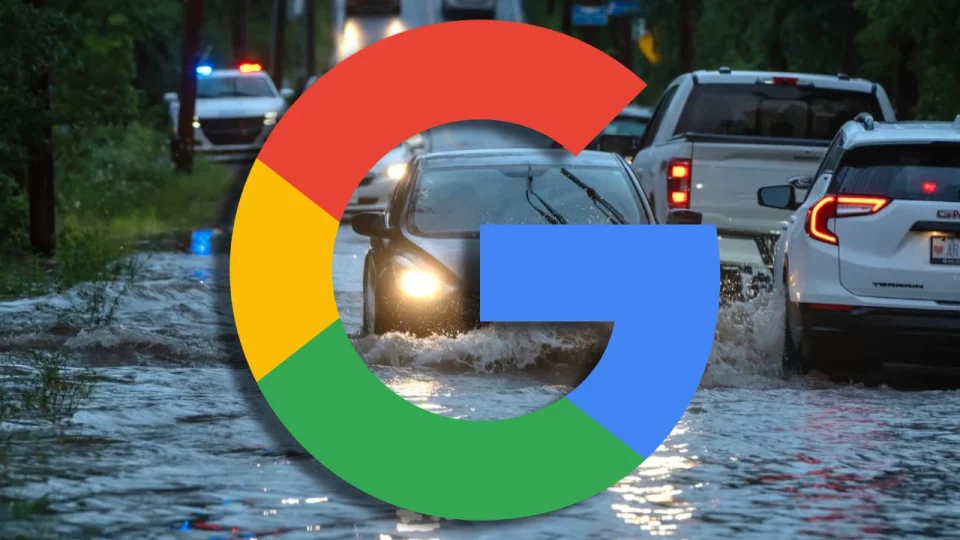In an era of escalating climate crises, the need for proactive disaster preparedness has become more urgent than ever. Google recently announced a major leap forward in its flood forecasting capabilities, unveiling an expanded AI-driven system that now serves 100 countries, covering a population of approximately 700 million people.
This expansion, accompanied by improvements in the system’s forecasting model and accessibility enhancements for researchers, demonstrates Google’s commitment to leveraging technology for humanitarian purposes. The expanded flood forecasting system holds the potential to significantly improve disaster response measures and save lives on a global scale.
Table of Contents
A Deep Dive into Google’s AI-Driven Flood Forecasting
Google’s flood forecasting project began with an initial goal to create timely, accurate flood predictions for regions vulnerable to extreme weather events. Since its launch, the project has relied on artificial intelligence to interpret complex hydrological and atmospheric data, predicting riverine flooding patterns that could affect large populations. The recent expansion from 80 to 100 countries, and an increase in coverage from 400 million to 700 million people, signals a significant evolution in Google’s capabilities. This growth is fueled by improvements in data accessibility, the development of a new model architecture, and innovative training methods that allow AI to process increasingly complex variables.
One of the key upgrades to Google’s system is its ability to generate forecasts up to seven days in advance—an improvement from the previous five-day window. This additional lead time is crucial in high-risk flood zones where every hour can impact evacuation efforts, resource allocation, and crisis management. With this expanded timeframe, governments and aid organizations can prepare more comprehensive response strategies, reducing the potential for loss of life and damage to infrastructure.
Unpacking the Technology Behind the Forecasts
The core of Google’s forecasting system relies on a sophisticated machine learning (ML) model that processes vast datasets, both historical and real-time, to identify patterns and predict flood risks. The system utilizes data from various sources, including satellite imagery, weather patterns, and topographical information, creating a multi-dimensional picture of flood risk in specific regions. To enhance the model’s accuracy, Google has incorporated additional “virtual gauges,” simulation-based prediction tools that assess flood probabilities in areas lacking traditional sensor data.
These virtual gauges allow Google’s system to predict river discharge and flooding probabilities even in remote regions where infrastructure limitations would otherwise inhibit data collection. Virtual gauges are an example of Google’s innovation in creating data points in challenging environments, underscoring its focus on inclusivity in the application of AI technologies.
The AI models have also been refined through access to a larger volume of labeled data, a crucial aspect of machine learning. As Google’s access to labeled flood data has grown, the algorithms have become more adept at recognizing patterns and predicting outcomes. This extensive training allows the models to make nuanced interpretations of environmental factors, resulting in predictions that are not only timely but also highly accurate. The integration of these improvements means Google’s model can anticipate flood dynamics with greater precision, benefiting communities previously underserved by flood warning systems.
The New API: A Pathway for Open Access and Collaboration
To foster collaboration with researchers and governments, Google has introduced a new application programming interface (API) for its flood forecasting data. This API, which is currently in development, will allow verified partners to access Google’s hydrological forecasts and flood data. By making this data available, Google aims to facilitate deeper scientific research and enable local authorities to adapt the information for region-specific needs.
This initiative reflects a growing trend in tech-driven environmental science: open data access. By offering an API, Google empowers local organizations, universities, and governments to conduct their own analyses and incorporate Google’s forecasts into broader disaster management frameworks. Through this collaborative approach, Google hopes to extend the benefits of its forecasting system beyond the immediate scope of the AI model, allowing local and global actors to innovate around flood preparedness and response strategies.
The Flood Hub: A Centralized Resource for Predictive Flood Data
Google’s enhanced forecasting system also includes the new Flood Hub, a centralized platform designed to provide comprehensive flood information for affected regions. The Flood Hub incorporates 250,000 forecast points generated by virtual gauges, which predict flood events based on environmental and atmospheric factors. With this vast network of forecast points, Google’s system can offer real-time insights into riverine flood risks across a wider array of geographic locations.
By concentrating data and forecasts in a single platform, the Flood Hub simplifies access for government agencies and aid organizations. Users can obtain information about expected flood levels, river discharge, and other relevant metrics, allowing them to make informed decisions about emergency measures. The data provided by the Flood Hub is verified through historical data when available, ensuring reliability while maintaining transparency about areas where sensor data is limited.
